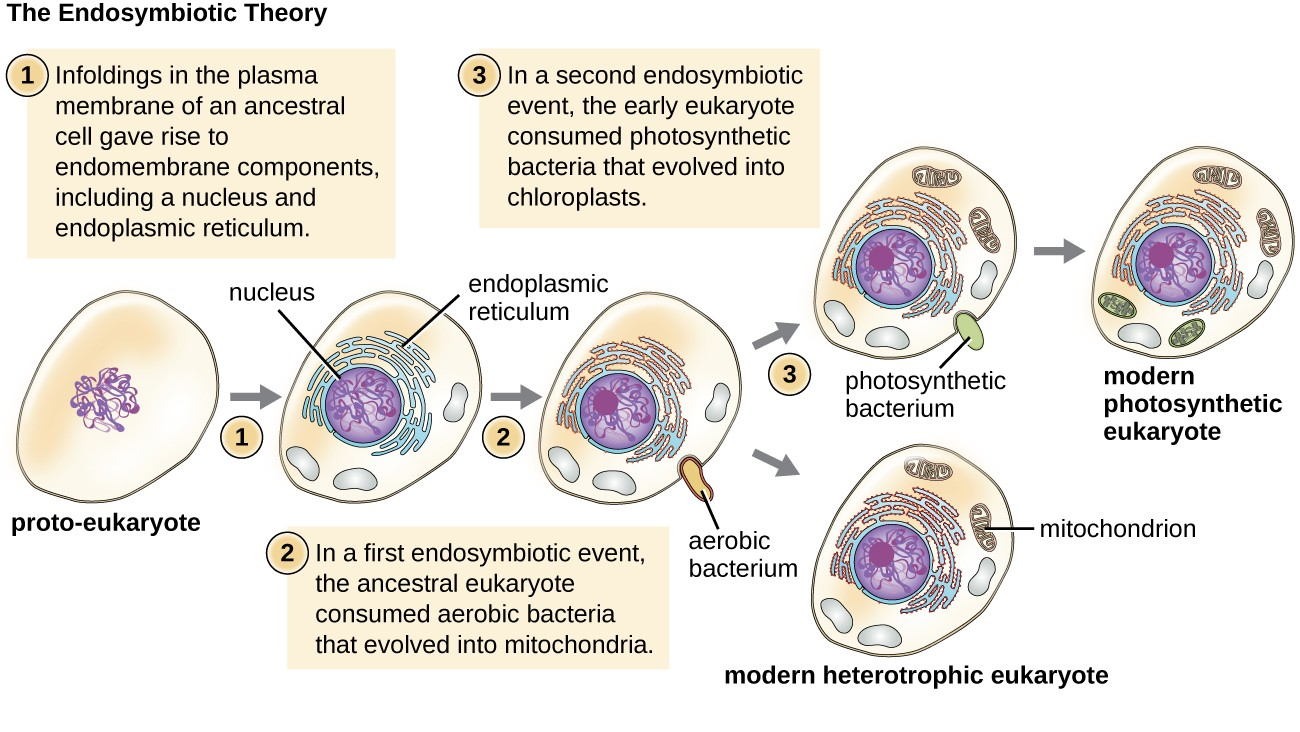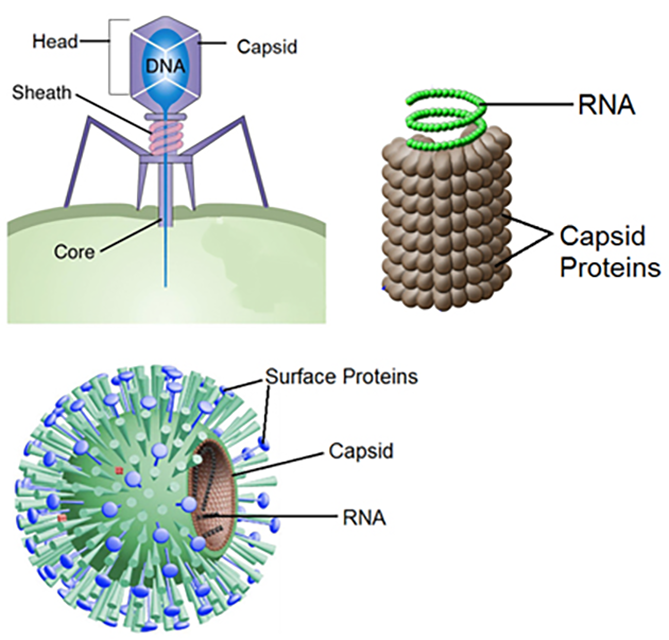1.01 Cells & Viruses

1. Definition of a Cell
- Cell: The smallest structural and functional unit of an organism that is classified as living.
- Significance: All living things are composed of cells, making them the foundational building blocks of life.
2. Cell Theory
- Cell theory is a fundamental principle in biology that establishes cells as the basic units of life. It consists of three main components:
- All Living Organisms Are Composed of One or More Cells
- Whether unicellular (single-celled) like bacteria or multicellular like humans, all organisms are made up of cells.
- The Cell Is the Basic Unit of Structure and Organization in Organisms
- Cells provide structure to organisms and carry out essential functions necessary for life.
- All Cells Arise from Pre-existing Cells
- New cells are formed by the division of existing cells, ensuring continuity of life.
3. Why Cells Are Considered the Basic Units of Life
a. Structural Basis
- Organization: Cells provide a structured environment where various biological processes occur.
- Diversity: Different types of cells (e.g., muscle cells, nerve cells) specialize to perform specific functions, contributing to the complexity of organisms.
b. Functional Basis
- Metabolism: Cells carry out all metabolic activities necessary for life, including energy production, synthesis of molecules, and waste elimination.
- Homeostasis: Cells maintain internal stability despite external changes, ensuring proper functioning.
c. Genetic Information
- DNA Storage: Cells contain genetic material (DNA) that holds the instructions for growth, development, and reproduction.
- Protein Synthesis: Cells translate genetic information into proteins, which perform various structural and functional roles.
d. Reproduction and Growth
- Cell Division: Cells reproduce through processes like mitosis and meiosis, enabling growth, repair, and reproduction of organisms.
- Inheritance: Genetic information is passed from parent cells to daughter cells, ensuring traits are inherited.
e. Response to Stimuli
- Adaptation: Cells can respond to environmental stimuli, allowing organisms to adapt and survive in changing conditions.
- Signaling: Cells communicate with each other through chemical signals, coordinating complex behaviors and functions.
Endosymbiotic theory
- The endosymbiotic theory suggests that certain organelles in eukaryotic cells, such as mitochondria and chloroplasts, originated as free-living prokaryotic cells that were engulfed by an ancestral eukaryotic cell and formed a symbiotic relationship.
- Explains the origin of eukaryotic cells and their ability to perform complex processes like respiration and photosynthesis.

Why Viruses Are Not Considered Living Compared to Cellular Organisms

Components of Viruses
- Genetic Material
- DNA or RNA (not both):
- Can be single-stranded (ssDNA/ssRNA) or double-stranded (dsDNA/dsRNA).
- Carries the instructions for virus replication.
- Capsid
- Protein coat that surrounds and protects the genetic material.
- Made of capsomeres (protein subunits).
- Provides the virus with shape (helical, icosahedral, or complex).
- Envelope (Optional)
- Some viruses have an outer lipid envelope derived from the host cell’s membrane.
- Contains glycoprotein spikes for attachment to host cells.
- Examples: Influenza virus, HIV.
- Enzymes (Optional)
- Some viruses carry enzymes needed for replication (e.g., reverse transcriptase in retroviruses).
Definition of Life in Cellular Organisms
- Living things with cells exhibit characteristics such as metabolism, growth, response to stimuli, independent reproduction, and homeostasis.
Reasons Viruses Differ from Cellular Life
- No Cellular Structure:
- Viruses lack the fundamental components of cells, such as membranes, cytoplasm, and organelles.
- No Independent Metabolism:
- Unlike cells, viruses cannot generate energy (e.g., ATP) or perform biochemical processes on their own.
- Dependent Reproduction:
- Cellular organisms can reproduce independently, while viruses require a host cell to replicate.
- No Growth or Division:
- Cells grow and divide through processes like mitosis, while viruses are assembled from parts within a host.
- No Response to Stimuli:
- Cellular life responds to environmental changes; viruses do not exhibit this trait.
- No Homeostasis:
- Cells regulate internal conditions (e.g., pH, temperature), but viruses cannot.
Key Comparison with Cellular Life
- Living Cells: Can independently sustain and regulate life processes.
- Viruses: Act as biological particles, remaining inert outside a host.
Practise Questions
1. Multiple Choice
Which of the following statements is NOT a component of the cell theory?
A) All living organisms are composed of one or more cells.
B) The cell is the basic unit of structure and organization in organisms.
C) All cells contain a nucleus.
D) All cells arise from pre-existing cells.
Answer: C) All cells contain a nucleus.
2. Short Answer
Define a cell and explain its significance as the basic unit of life.
Answer:
A cell is the smallest structural and functional unit of an organism that is classified as living. Its significance lies in the fact that all living things are composed of cells, making them the foundational building blocks of life. Cells provide structure, carry out essential functions, and enable growth, reproduction, and response to the environment.
3. Explanation
Explain how cell division ensures the continuity of life.
Answer:
Cell division, through processes like mitosis and meiosis, allows cells to reproduce and create new cells. This ensures that genetic information is passed from parent cells to daughter cells, maintaining the organism’s traits and enabling growth, repair, and reproduction. By arising from pre-existing cells, cell division ensures the continuity and preservation of life across generations.
4. Diagram-Based Question

Label the following structures on the cell diagram provided:
- Nucleus
- DNA
- Ribosomes
- Cell Membrane
- Mitochondria
5. Compare and Contrast
Compare the roles of DNA storage and protein synthesis in maintaining cellular functions.
Answer:
DNA storage involves holding the genetic instructions necessary for growth, development, and reproduction. It ensures that genetic information is preserved and passed on during cell division. Protein synthesis, on the other hand, translates the genetic information encoded in DNA into proteins, which perform various structural and functional roles within the cell. Together, DNA storage ensures the continuity of genetic information, while protein synthesis executes the instructions necessary for cellular activities and maintenance.
6. Application
How do cells maintain homeostasis despite changes in their external environment? Provide two mechanisms involved.
Answer:
Cells maintain homeostasis by regulating internal conditions to remain stable despite external changes. Two mechanisms involved are:
- Selective Permeability of the Cell Membrane: Controls the entry and exit of substances, maintaining the internal environment.
- Active Transport: Uses energy (ATP) to move molecules against concentration gradients, ensuring essential substances are retained and waste products are expelled.
7. Short Answer
Describe how cells respond to environmental stimuli and the importance of this response.
Answer:
Cells respond to environmental stimuli through adaptation and signaling. Adaptation allows cells to adjust their functions and structures to survive in changing conditions. Signaling involves chemical communication between cells, coordinating complex behaviors and functions within an organism. These responses are crucial for the survival, growth, and proper functioning of organisms in dynamic environments.
8. True or False
True or False: All organisms, whether unicellular or multicellular, are made up of one or more cells.
Answer:
True. All living organisms, whether unicellular like bacteria or multicellular like humans, are composed of one or more cells.
9. Short Answer
Explain the role of genetic information in cells and its impact on an organism’s traits.
Answer:
Genetic information stored in DNA within cells holds the instructions for an organism’s growth, development, and reproduction. This information is used to synthesize proteins, which determine the structure and function of cells. As a result, the genetic information directly impacts an organism’s traits by dictating how proteins are made and how cells behave, leading to inherited characteristics passed from parent to offspring.
10. Question
Discuss the structural and functional reasons why cells are considered the basic units of life.
Answer:
Integration of Structure and Function: The presence of organelles and cellular structures enables cells to efficiently carry out their roles, supporting the idea that cells are the foundational building blocks of life.
Structural Basis: Cells provide an organized environment where biological processes occur. The diversity of cell types allows specialization for specific functions, contributing to the complexity of organisms.
Functional Basis: Cells perform all metabolic activities necessary for life, maintain homeostasis, store genetic information, carry out protein synthesis, and reproduce through cell division. These functions are essential for growth, development, and response to the environment.